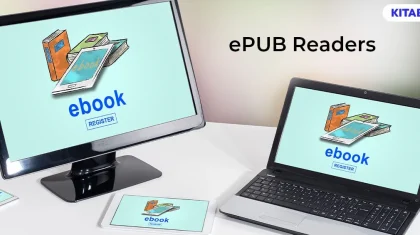
Benefits of Using SDKs in Improving the User Experience of Educational Software and Apps
Summarize this blog with your favorite AI:
As with any publisher, higher education publishers are constantly looking for ways to improve their customers’ experience. With mobile-first learning gaining prominence, developing a high-quality educational app has become the need of the hour for academic course providers.
Software Development Kits (SDKs) play a crucial role in developing user-friendly educational software and apps. They enable developers to create apps that address the learners’ needs, allow interaction with online resources and facilitate easy data sharing between other applications.
In this article, we’ll look into why education providers are increasingly moving towards using SDKs. Here’s what we’ll cover.
Table of Contents
What Are SDKs?
SDKs or Software Development Kits are a collection of downloadable tools that developers use to build or enhance software applications. The kit comprises everything one may need to create a particular module within an app.
Depending on the functions or features one needs in their application, SDKs contain a variety of software tools. These are integrated into the app with the help of SDK resources. The resources an SDK might use include, documentation, code, samples, libraries, processes, and APIs.
The process of building an app from scratch can be complex and time-consuming. Higher education publishers can take advantage of SDKs to speed up the process without losing any essential features they might need in their reader app.
Basic SDK Ingredients
1. Code Libraries
Code libraries are pre-defined lines of code that developers use to make the app accomplish day-to-day programming tasks.
2. Compiler
A compiler translates the SDK source code’s high-level programming language to a lower level programming language, enabling easy app development.
3. Application Programming Interfaces (APIs)
APIs enable the app to access other services or applications. For instance, your learning platform could integrate with a Blackboard API, allowing educators to interact with students.
4. Code Samples
Code samples guide developers in writing code by showing examples of a code-in-action and providing a step-by-step demonstration.
5. Documentation
Documentation is a set of supporting documents that explain how the SDK works. Documentation should be clear and comprehensive for effective code deployment.
6. Debugger
A debugger helps detect errors in codes. It corrects small mistakes for the smooth running of the application.
The Importance of SDKs in Educational Software
SDKs add functionality to an educational app. From simple features such as logging in, faculty dashboards, or mobile payments to more complex features such as virtual reality or gamification, SDKs can integrate all these services into eLearning apps quickly and efficiently.
SDKs take a lot of the burden off software developers. Their solid functionalities and numerous API integrations enhance the user experience within the application. Most modern apps that users interact with today are developed using SDKs.
How Publishers Benefit from the Use of SDKs
While developers definitely benefit from SDKs, here are a few ways they also serve the interests of higher education publishers.
1. Faster Deployment
As mentioned above, SDKs make the development of an application quick and effortless. They come fully- equipped with code examples and documentation.
As such, your tech team need not waste time learning and writing new codes to successfully deploy additional features in your learning app.
2. Enhanced User Experience
Publishers can ensure a great user experience when their apps are stable and bug-free.
Existing well-built SDKs often come with a guarantee of higher performance and offer better resilience. They are tried and tested with real-life scenarios, ensuring smooth operation at all times.
Besides, they allow seamless integration with other services and APIs, providing more functionalities for users.
3. Greater Customization
Carefully designed SDKs make customization simple and easy. They help publishers tailor their apps to meet the needs of their learners. Many critical parts of SDKs can be implemented as plugins to support customization and flexibility.
4. Reduced Costs
SDKs reduce the application development cost without compromising the quality. The short development cycle, quick testing, and implementation save substantial costs.
Updating your app with new features is also comparatively inexpensive as developers do not have to write codes from scratch. By leveraging the best-in-industry SDKs, educational publishers can scale without burning a hole in their pockets.
Also Read: Best eBook Creation Softwares
5. Faster Time-to-Market
With SDKs, you can roll out integrations in a fraction of the time it would take to build the app. It allows you to launch your product to the market quickly.
What to Look For in a Good SDK?
With hundreds of commercial SDKs available, finding the perfect fit for your app can be challenging. So here are a few tips to help you in your search. The SDK should:
- Have precise and up-to-date documentation and code samples.
- Offer flexibility for scaling.
- Secure user credentials and app data.
- Be lightweight with a low impact on battery life.
- Allow for branding customizations.
Wrapping Up
As you can see, SDKs are essential to simplifying the development and release of educational apps. They also improve the functionality of your LMS or reader.
With in-built multimedia support and LTI integrations, the KITABOO SDK comes with a host of features that enable you to build a customized app that gives readers an unmatched reading experience.
Contact our expert team now and get started!
To know more, write to us at contact@kitaboo.com.
Suggested Reads:
Discover how a mobile-first training platform can help your organization.
KITABOO is a cloud-based platform to create, deliver & track mobile-first interactive training content.



